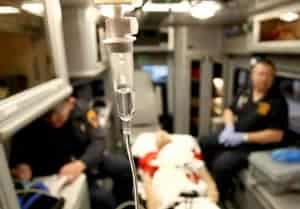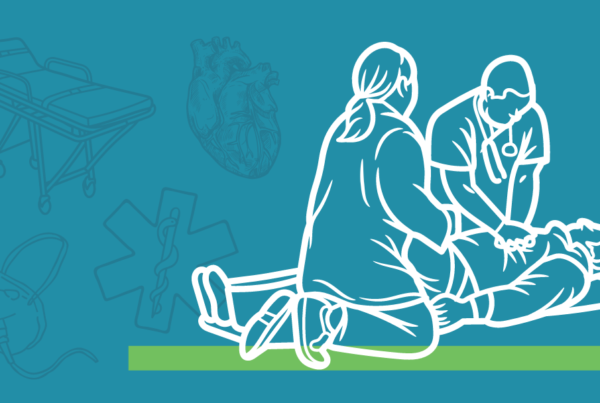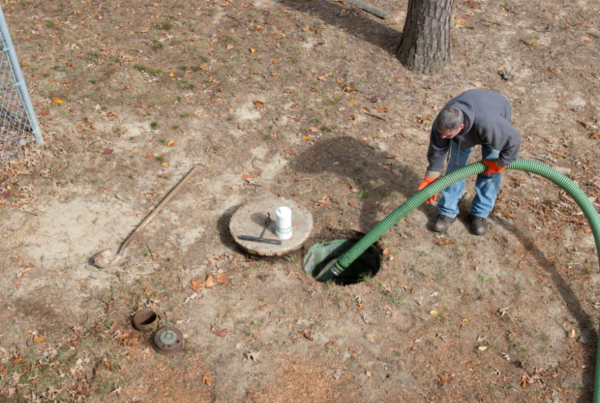 You don’t have to look far to find an online discussion where students are talking about feeling unprepared for the NREMT exam—especially at the EMT level. Many are saying the tests they took in class are nothing like the NREMT—and they’re right.
You don’t have to look far to find an online discussion where students are talking about feeling unprepared for the NREMT exam—especially at the EMT level. Many are saying the tests they took in class are nothing like the NREMT—and they’re right.
When updated education standards were released seven years ago, EMS education was supposed to change and improve. It didn’t. Now we seem to be faced with the realities of a non-EMT-Basic world. Solid, scenario-based, comprehensive testing has become increasingly important in this world, but that doesn’t matter if students’ classroom training doesn’t hit the mark.
For those of us who are educators, the days of linear chapter-by-chapter PowerPoint presentations are over—at least if we want our students to pass the NREMT. Classes that use the chapter-by-chapter approach also miss the opportunity to teach the decision-making and clinical thinking skills that are critically important in the real world.
Here are five examples of things students must know for the NREMT but frequently leave class without.
1. How to handle a patient with more than one problem
We teach about stroke, and then we teach about diabetes. Rarely do we teach what to do when a diabetic patient has a stroke. Students hear that glucose is bad for stroke patients but fail to realize that hypoglycemia is bad in any patient. They don’t always hear that diabetic patients (as well as seizure and migraine patients) sometimes present like stroke patients—and PowerPoint-based classes offer no opportunity to integrate such learning through exercises or scenarios. The result is an inaccurate, one-size-fits-all approach to patient care. This doesn’t work in the field, and it doesn’t work on the NREMT.
2. How to differentiate early versus late signs of shock in a scenario
Our students memorize the signs and symptoms of shock. Some classes provide enough pathophysiology for students to understand shock, but few provide exercises or scenarios that familiarize students with different patient presentations and give them practice in applying conceptual knowledge to determine criticality or make decisions about transport. Application is key to both clinical practice and exam prep.
3. How to identify critical subtleties in assessment and care
Let’s say a student taking the NREMT gets a question where the scenario involves a male patient with chest pain. The patient is holding his fist to his chest like a cardiac patient and is sweaty and ashen like a cardiac patient—but instead of crushing pain, the patient has tearing or ripping pain. Would the student recognize the difference in presentation between an infarction and an ascending aortic dissection? The student’s ability to identify subtleties in a NREMT question makes a big difference in his or her ability to choose the best answer.
Continuing on the theme of subtleties, students must be able to consider a patient’s presentation—in an exam scenario and in real life —and determine what’s important and what isn’t. Many times a slightly elevated respiratory rate, a narrowed pulse pressure, or pale skin might seem like a small detail, but such details can be the key to understanding the situation and choosing the best course of action.
4. How to differentiate among different causes of a complaint
In situations where an EMT must choose among multiple treatments that are available to administer, differential diagnosis is important—primarily because treatment decisions are based on choosing the right protocol. How is that choice made? By knowing what’s wrong with the patient.
Being able to tell the difference between a crashing 16-year-old asthmatic patient who is no longer wheezing and an 18-year-old patient with an opiate overdose is important. The ability to distinguish a sick and borderline-septic pneumonia patient from a heart failure patient is important. Our students’ classroom training should at least provide them with the practical tools they need to recognize key differences, even if we don’t expect them to make an iron-clad diagnosis.
5. How to choose a medication based on patient presentation
Our textbooks all have pharmacology chapters. They all have patient care chapters that discuss appropriate pharmacological interventions for many conditions. But do our EMT students get classroom training that includes exercises or scenarios to help them learn to link the two in practice? The NREMT expects students to be able to do this (and with only minimal information provided), but most classes provide little experience of this kind.
Limmer Education and our co-founder, Dan Limmer, have been long-time advocates of this type of EMS education. We provide many resources for educators and students, from our high-quality exam prep apps (which include the types of practice questions students need to be prepared) to our learning exercises for the classroom.



Great work Dan
Thank you Dan. It means a lot coming from you.
Are you an Indiana EMS instructor? If so, please contact me. I have some questions
#6… Mandate education using the “Sick/Not Sick” approach!!! It is a game changer in the field!!
Absolutely Sick-Not Sick is the driving force encompassing an EMT program
Totally agree with Mike Helbock, add “Sick/Not Sick” approach.
The concept of sick/not sick has been around for a long time. The pediatric assessment triangle is a good example. Interestingly, those same concepts largely work for adults–it’s just that the peds people got more grant money on that one.
The whole sick/not sick concept (also known as determining criticality) is a combination of many things that we now have much more of in the EMT curriculum including pathophysiology, better system-based assessment and more. Experience helps too.
I look at “sick/not sick” as a pre-packaged version of the things we should know. Steven Covey’s Seven Habits of Highly Effective People is a great example of this. Nothing presented in his seven habits were revolutionary. They were just well packaged. Covey said: Seek First to Understand, Then to be Understood. Not rocket science. Didn’t we somehow know that we should listen first? Our parents told us that. But the packaging and description makes it what it is and, getting back to the point of this blog post, is something that should be taught better in primary EMS education at all levels.
A basic EMT doesn’t have enough classroom time and knowledge to learn everything in nine months time. I think it is both irresponsible and irrational to think that they can. Without the other associated courses that are found in the paramedic and nursing programs (anatomy & physiology, pharmacology, microbiology, biochemistry, etc), it is highly unrealistic that a basic EMT will learn all there is to know about the examples above in nine months. It would take at least two years of full time college level education and associated experience to be competent in the areas listed above. And with many basic level EMTs being volunteers with jobs not in the medical field, family time, and other hobbies and interests, it is unrealistic to think that those individuals would have the time to expand those levels of education.
It sure sounds like you didn’t have a great experience.
There is so much to respond to I’ll just say that the EMT is the entry level for EMS on an ambulance. It isn’t EMT-Basic any more–although many still teach that way.
I don’t think it is impossible for an average length EMT course to give you more of what you need–but it must be taught differently than it has been in the past.
No, I actually had a great experience. I’ve been in EMS for 27 years. I was a first responder, then an EMT-Basic, then an I-85, then an I-99, and then paramedic, and finally got my critical care designation three years ago. I also have an associate degree in paramedic technician as well as several other non-medical degrees. You can’t teach in nine months time what the above article above wants EMTs to learn. To me it seems like this article wants EMTs to come out of EMT school with no other medical education prior to the EMT class an have a solid handle on all of the concepts. In my 27 years I have been a preceptor for hundreds of EMTs and paramedics, and proctored several thousand during licensing exams. What this article is asking for is NOT realistic for people with no other medical background other than 160 hours of EMT Basic class. They can be taught all of the above, but the understanding of what’s happening comes with years of experience.
Kenny–I think there are some things we will agree on and some we won’t. I also think there are larger systemic undertones (e.g. volunteer EMS) within. I’d like to hit a couple of points and thank you for commenting here. I value your experience.
I don’t think that an EMT out of school is ready for the “big time,” that code or big trauma. I think we create entry level providers as opposed to street ready providers. Individuals and their agencies both have the responsibility to continue education and practical application of that education.
I believe a 160 hour class is about average. My assertion isn’t that it is the ideal time to train an EMT. It is that the hours have to be used differently than lectures using PowerPoints if we want to get students even close to what you expect. I think it is important to state that while EMTs are the minimum level for staffing on the ambulance, most ambulances run with some level of ALS. In a conversation with the state EMS office here in Maine I learned that 95+ percent of calls had some level of EMS provider.
I don’t think we have an EMT level of certification because it is ideal. I think we have it because we have always had it (since the early 1970s anyway). The Scope of Practice project back in the 2000s initially recommended a scope for the EMT that was closer to the current AEMT. There was no AEMT level. It was only EMR, EMT, paramedic and advanced practice paramedic. That got pushed back (sometimes I think sadly) to the more traditional roles.
I think we might both agree that proposed system may have given more training to the EMT level and been beneficial–but it would take more training hours and it was squashed. To be fair it was also squashed because it brought paramedic down a bit closer to AEMT and that was equally unpopular.
My only intent here is to make training more efficient, practical and relevant to produce EMTs who can think and do basic diagnosis–which is necessary with the tools in the EMT’s toolbox. EMT class won’t do it all–but it can be made a whole lot better.
About time this is addressed. It’s amazing we have EMTS that don’t kill our patients.
Somehow we get by, and in an overwhelming majority of calls follow the primary tenet of medicine: do no harm.
I do believe we are getting better. It never happens as quickly as we want it to.
All I can say is that I am glad you mentioned this. I have seen a lot of ppt pushers/readers who give nothing to the students. We have been educating our students like Dan has suggested for several years now. Students are confused at first doing a class that I more hands on then sitting at a desk, but after a but they settle in and do very well.
It takes a while. Students have been conditioned to believe that learning is sitting there and getting information handed to them. When you give activities and exercises they learn better but don’t realize it. It takes time. Sticking with it is definitely the way to go. Bravo!
Love this article, as an educator I have always applied their learning into scenarios in the classroom to tie everything together, we have more scenarios than lectures.
I am so happy to see more and more of these posts. I’m thrilled. Congratulations! Your students benefit and as an educator you have risen to a greater and more valuable role as facilitator!
I do these things (including #6). My students are baffled, confused, and frustrated. Our high school systems are not preparing kids to least this way.
I taught a paramedic class a few years back. I asked the students to do a presentation and a majority did PowerPoints (I rarely used them in class) because that is how they were taught in every other class they have been in.
Keep after it. It takes as many as 4 weeks of doing that to even begin to have them feel comfortable.
Graduation from an E.M.T. (or Paramedic) training program should never be the end of education and learning. Unfortunately, the salaries of E.M.T.s and paramedics do not encourage or compensate for this. When poor salaries require E.M.T.s and Paramedics to work long hours or more than one job or also train for simultaneous careers as firefighters, there is little time or incentive to reach for a higher standard than what is minimally required to maintain your job or certification.
I hear what you are saying, RH. You are certainly not alone in feeling this.
But the question that must be asked is: If we don’t do it for ourselves who will? It is the classic chicken and egg question of which comes first, wanting more or doing more to achieve the status to earn more.
Great article! We have been transitioning our EMT program over the past three years. Our current model has students doing read ahead assignments and the ability to view power point from home prior to the interactive classroom session. Some students are excelling while some are lagging behind. Hoping testing in June proves the model and most importantly puts competent providers on the street.
Scott–Keep your expectations high. They will rise to it. Many times educators back down instead of making students rise to the occasion. It can be painful at first but it is necessary.
I also advocate for solid, comprehensive testing. Challenging quizzes and exams are one of the best ways to get students to participate and study. Once they link their work to success you are off to the races!
My friend Joe Mistovich says: If you want students to learn superficially, test superficially. If you want students to learn comprehensively, test comprehensively.
Again Dan, you hit the nail on the head. I am a 20 year old college student and have just recently passed my NREMT exam and became certified and licensed as an EMT. I loved every minute of the class, but it was missing something. We had lecture for 3 hours in one day, for two days out of the week, and a 6 hour lab on Fridays. The lecture consisted nothing more than slides that did not have much detail and were not very engaging at all. There were actually students who were dozing off in class at times, which is never good. We had online tests and quizzes that tested us on each chapter of the book. The problem is that we were tested on fact based content. There is nothing wrong with that, but it felt too simple at times. It did not require much thinking on our end. You either read about it and memorize it, or don’t. We had 6 exams that tested us on those online quizzes and tests. These tests were not too challenging because again, it was just fact based questions and answers, such as “What abdominal quadrant is the appendix located in.” Our lab was very fun because we learned to actually feel the equipment and do the actions that will be needed of us in the field. After our course ended in December, I felt prepared but not prepared enough if that makes any sense. I had heard different stories about the NREMT exam and wanted to make sure I passed on my first try. I had to do some looking online but I finally came across the “EMT PASS” app and purchased and downloaded it. I would like to say thank you for being able to design and create such an incredible app that truly tests your knowledge. I was finally getting those “scenario” based questions I had been looking for that we were not getting in class for some reason. I told myself that passing is the ONLY way. I did not let the thought of failing even enter my mind. I used this app for 3 weeks before my exam came. I went into that testing center confident and knowing I had been tested to the best of my ability and was ready to ACE the NREMT. I got my results back the next day and was very happy and excited to see that all of my hard work and preparation had paid off. I guess the whole point of this is to tell students to not feel discouraged about the NREMT exam. If you truly want to pass, you will. It is as simple as that. Don’t slack off in class, pay attention and do all of your homework and try your very best because after all we are in the business of helping other HUMAN LIVES, so it is obviously very important and serious to be the best student you can be. Make sure you study when the class ends, find something that can help you to study and that challenges the knowledge you have learned over the past 16 weeks of class. I would like to see professors integrate more “scenario” based questions in class and bring up discussions about the NREMT exam, because in our class we did not really talk about the NREMT exam until the last two weeks of class, which created a lot of unnecessary anxiety about it. Other than that, I am looking forward to continuing my education in EMS. I start the fire academy in 3 weeks and will be going into the Paramedic program after that. I am looking forward to a very rewarding career, and am happy I finally found something that I truly love. So thank you, Dan Limmer for all of your tips/insight on EMS topics and everything else you have done. It is greatly appreciated.
– Alex
After being in EMS forever…..and currently serving as an instructor, I would love to sit in on classes taught ‘correctly’ to this format. Some one could get rich doing ‘train the trainer” video’s, so we could all learn a better practice.
Great 5 points Dan! As educators we must change to meet the needs of our students and their future patients. “Death by power point” is not learning. We must challenge and engage out students. Without that stimulation we will see students sleeping, texting, and staring into space. I used to think that we needed more seat time to train EMTs but when you go back to our instructor preparation classes we recall that we only remember 10% of what we hear. I take that if we only use lecture as our main teaching tool we are wasting 90% of our students’ time. Let’s make those class periods worth the students time. Thanks for your article!!